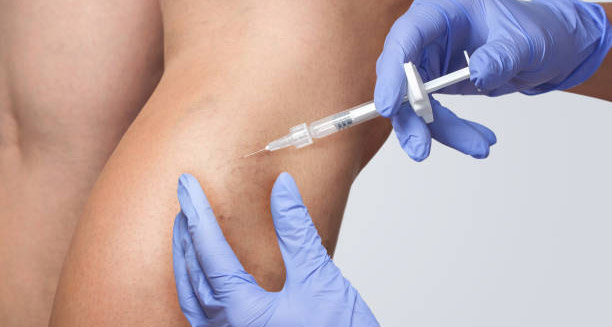Treatment of leg ulcer requires a comprehensive and tailored approach that addresses both the wound itself and any underlying health conditions contributing to poor healing.
To start, accurate diagnosis is crucial. From there, good wound care and managing other health problems become the focus. Conditions like venous insufficiency, diabetes, or poor blood flow can slow healing. So, a full plan needs to treat the ulcer and help prevent it from coming back. It also aims to ease pain and improve life for the patient.
Wound Care Is the Foundation of Treatment of Leg Ulcer
Proper wound care is the key step in treatment of leg ulcer. Cleaning the wound with saltwater or special cleansers helps remove germs and dirt without harming healthy skin. Removing dead or infected tissue, called debridement, helps new skin grow. This step can be done with a sharp tool, special dressings, or even tiny medical larvae in some cases. The method used depends on the wound and the experience of the health provider.
Choosing the right dressing matters. Dressings should keep the wound moist but also protect it from germs and injury. Common types include foams, gels, alginates, and antimicrobial options. If the wound shows signs of infection, dressings with silver, iodine, or honey might be used. These dressings are changed every few days, and the wound is checked to see if the dressing is still the best choice.
Compression Therapy and Treatment of Leg Ulcer
Compression therapy is very helpful, especially for venous ulcers. This treatment helps blood move back to the heart, lowers swelling, and gives more oxygen to the wound. It can be done with several layers of bandages or compression socks. But doctors first check blood flow using an Ankle-Brachial Pressure Index (ABPI) test. If blood flow is already poor, compression might cause more harm.
In some situations, antibiotics are needed. Doctors only use them when the ulcer shows clear signs of infection—like pain, redness, heat, swelling, or pus. Using antibiotics too often can lead to resistance. For small local infections, creams or antiseptic dressings might work better than pills.
Advanced Treatments for Difficult Ulcers
If standard care doesn’t help, advanced methods might be used. One is vacuum-assisted closure (VAC). This tool removes extra fluid and pulls the edges of the wound together to speed up healing. Other options include skin grafts, artificial skin, or special growth treatments. These are often used when ulcers are large or heal slowly.
Another major part of treatment of leg ulcer is caring for other health issues. For venous ulcers, lifting the legs above the heart helps reduce swelling. For ulcers caused by poor blood flow, getting better circulation is key. That might involve quitting smoking, managing cholesterol, or using blood-thinning medicines. In serious cases, surgery like bypass or balloon treatment may help blood flow.
Managing Diabetes in the Treatment of Leg Ulcer
People with diabetes need extra care. Good blood sugar control is vital to help wounds heal and to avoid infection. Patients should check their feet often, wear the right shoes, and follow hygiene tips. For nerve problems, pain medicine and foot care from a podiatrist may be needed.
Pain control is also important. Ulcers can hurt, especially when inflamed or infected. Painkillers like paracetamol or anti-inflammatory pills can help. Special dressings with pain-numbing medicine may ease discomfort. For long-term pain, referral to a pain expert might be helpful.
Multidisciplinary Care and Treatment of Leg Ulcer
Working with a team of health professionals often leads to better results. Nurses, surgeons, skin specialists, diabetes doctors, foot doctors, and physical therapists can all be involved. This teamwork helps treat all causes of the ulcer and supports healing from every angle.
Teaching patients about wound care is just as important in the treatment of leg ulcer. Patients must know how to clean their wounds, change dressings, spot signs of infection, and follow all instructions. If they use compression, they should learn how to wear and care for the stockings.
Nutrition and Long-Term Treatment of Leg Ulcer
Good food choices help wounds heal. A healthy diet full of protein, vitamins A and C, iron, and zinc helps new skin grow. If a patient is underweight or eats poorly, a dietitian can give advice that really helps.
Preventing ulcers from coming back is another big part of the treatment of leg ulcer. After healing, people at risk—especially those with vein problems—should keep wearing compression socks. They should also check their skin often, treat small injuries right away, and avoid sitting or standing too long. Good foot care also matters a lot.
Surgical and Emotional Support in Treatment of Leg Ulcer
Some patients may need surgery to fix body issues that cause ulcers. For example, people with varicose veins might benefit from vein surgery. If the wound is large or not healing, doctors might suggest skin grafts or surgical removal of damaged skin.
Long-term ulcers can affect mental health too. Living with a slow-healing wound can feel frustrating and lonely. People may become anxious or sad. They might avoid others. Emotional care, counselling, and support from social workers can make a real difference.
Final Thoughts on Treatment of Leg Ulcer
In the end, treatment of leg ulcer must be complete, personal, and handled by a full team. Wound care, compression, managing health problems, and stopping ulcers from returning all play a role. With steady care and proper follow-up, most leg ulcers can heal well. This brings comfort, better movement, and a stronger sense of well-being.


